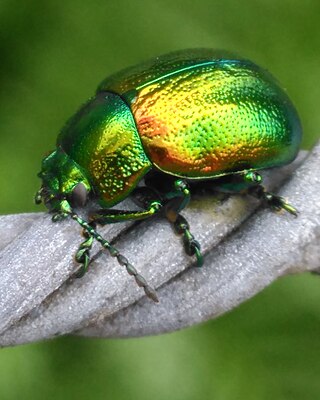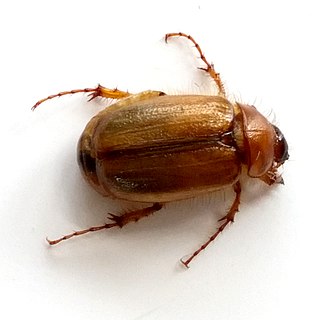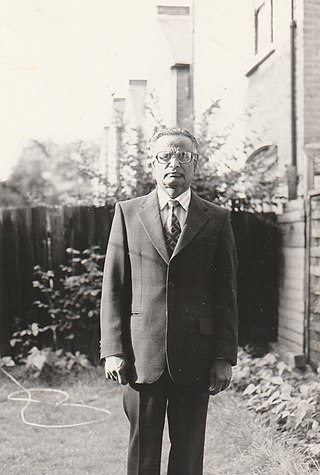
Entomology is the scientific study of insects, a branch of zoology. In the past the term "insect" was less specific, and historically the definition of entomology would also include the study of animals in other arthropod groups, such as arachnids, myriapods, and crustaceans. This wider meaning may still be encountered in informal use.

Biological control or biocontrol is a method of controlling pests, whether pest animals such as insects and mites, weeds, or pathogens affecting animals or plants by using other organisms. It relies on predation, parasitism, herbivory, or other natural mechanisms, but typically also involves an active human management role. It can be an important component of integrated pest management (IPM) programs.

In evolutionary ecology, a parasitoid is an organism that lives in close association with its host at the host's expense, eventually resulting in the death of the host. Parasitoidism is one of six major evolutionary strategies within parasitism, distinguished by the fatal prognosis for the host, which makes the strategy close to predation.

The Tachinidae are a large and variable family of true flies within the insect order Diptera, with more than 8,200 known species and many more to be discovered. Over 1,300 species have been described in North America alone. Insects in this family commonly are called tachinid flies or simply tachinids. As far as is known, they all are protelean parasitoids, or occasionally parasites, of arthropods, usually other insects. The family is known from many habitats in all zoogeographical regions and is especially diverse in South America.

The Tansy beetle is a species of leaf beetle. The common name derives from its main foodplant, Tansy, but it can also use other wetland plants such as Gypsywort and Water Mint. It measures 7.7–10.5 mm in length and has a characteristic bright metallic green colouration, with pitted elytra and a coppery tinge. In addition to the nominotypical subspecies, which repeats the specific name, C. graminis graminis, there are five further distinct subspecies of Tansy beetle, which, collectively, have a Palearctic distribution, although in the majority of countries where it is found the species is declining. In the United Kingdom it is designated as 'Nationally Rare'. The stronghold population here is located along the banks of the river Ouse in York, North Yorkshire. Other, small, fenland populations exist at Woodwalton Fen and at Welney Wildfowl and Wetlands Trust (WWT) reserve.

A wasp is any insect of the narrow-waisted suborder Apocrita of the order Hymenoptera which is neither a bee nor an ant; this excludes the broad-waisted sawflies (Symphyta), which look somewhat like wasps, but are in a separate suborder. The wasps do not constitute a clade, a complete natural group with a single ancestor, as bees and ants are deeply nested within the wasps, having evolved from wasp ancestors. Wasps that are members of the clade Aculeata can sting their prey.

Cryptolaemus montrouzieri, common name mealybug ladybird or mealybug destroyer, is a species of ladybird beetle native to eastern Australia. The beetle feeds on mealybugs and other scale insects, and is used to control those pests on citrus orchards worldwide.

Charles Henry Tyler Townsend was an American entomologist specializing in the study of tachinids (Tachinidae), a large and diverse family of flies (Diptera) with larvae that are parasitoids of other insects. He was perhaps the most prolific publisher of new tachinids, naming and describing some 3000 species and genera. He made important contributions to the biological control of insect pests and he was the first to identify the insect vector of a debilitating disease in Peru. Townsend was also a controversial figure and criticism of his approach to insect taxonomy continues to this day.
Frederick Arthur Godfrey Muir was an English entomologist who worked in Africa and Hawaii. He wrote extensively describing many new species of insect and establishing the family Kinnaridae. He was also a pioneer of biological control.
Tumidagena minuta is a species of delphacid planthopper in the family Delphacidae. It is found in North America.

Aspidiotus destructor, the coconut scale, is a species of armoured scale insect in the family Diaspididae, found in many tropical and subtropical parts of the world. It is a serious pest of coconut and banana, and attacks a range of other fruiting trees and ornamental plants.
Antonina is a genus of mealybugs in the family Pseudococcidae. There are at least three described species in Antonina.
Javesella atrata is a species of delphacid planthopper in the family Delphacidae. It is found in North America.

Javesella is a genus of delphacid planthoppers in the family Delphacidae. There are at least 20 described species in Javesella.

Stobaera is a genus of delphacid planthoppers in the family Delphacidae. There are about 14 described species in Stobaera.
Tumidagena is a genus of delphacid planthoppers in the family Delphacidae. There are at least three described species in Tumidagena.
William Robin Thompson was a Canadian entomologist and also wrote on the philosophy of science in his book Science and Common Sense: An Aristotelian Excursion (1937). He specialized in the biological control of agricultural and forest insects and served as the head of a laboratory of the Imperial Institute of Entomology which changed its name from the Imperial Parasite Service to Imperial Bureau of Biological Control and later the Commonwealth Institute of Biological Control.
Neodusmetia sangwani is an encyrtid parasitoid from India that was used in classical biological control of the Rhodesgrass Scale, Antonina graminis (Maskell) (Pseudococcidae) which is a major pest of grasses outside of its native range in Asia. The parasitoid was successfully controlled the scale infestation in Texas in the 1950s and 60s. It is considered among the most successful examples of classical biological control.

Costelytra zealandica is a species of scarab beetle found in forested areas of greater Wellington. It was originally described in 1846 by the British entomologist Adam White as Rhisotrogus zealandicus from a specimen obtained during the Ross expedition. The species is known to feed on roots of plants and trees, so is considered a pest for many farm pastures.

Bokinakere Ramakrishnaiya Subba Rao was an Indian-origin entomologist who worked at the Commonwealth Institute of Entomology. He was a specialist on biological control and described many species of parasitic wasps including Neodusmetia sangwani which is considered one of the most successful examples of classical biological control. Rao also served as a linesman and umpire at Wimbledon from 1969 to 1995.













